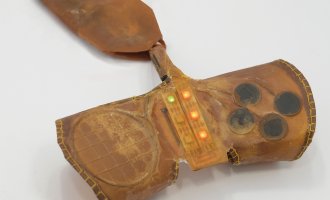
WHO IS PLAYING WITH US?
Mayer's Encyclopaedic Dictionary explains play as an "activity (of animal and man) which is performed without a conscious purpose, for the pleasure of the activity as such or in its success. The PLAY of humans is understood as a behaviour determined behaviour, which plays an essential mediating role in the interrelationship between individual and society, which plays an essential mediating role [...]."
What is at stake, who is playing with "us", who is playing along, what role does art play, what rules does it obey? These are the aspects on which the 2024 programme is based.
The spectrum ranges from an understanding of play as an example of creative engagement with the world, in which homo ludens develops his cultural and personal skills, to the significance of the aesthetic and playful as the antithesis of instrumental reason, as Marcuse, for example, associated the term with freedom and thus interpreted it politically, to playing with and around reality; from the exploitation of players playing games1 to those forms of propaganda, political agitation, manipulation and targeted disinformation that, by playing their games with reality, successively transform it into a gaming environment. (The term global player takes on a further dimension here.) The damage that democracy suffers from this - more than any other political system dependent on the extensive agreement of those who bring it to life about the reality in which it is lived - first and foremost damages the community that organises it.
One focal interest arises almost inevitably from this: the successive dissolution of the overall social view of things, as it could diffuse in culture, in favour of an "immersion" of possible truths through manipulation, infiltration, indoctrination ... and the particularisation of ideas about the real. This development seems like the radicalisation of what Foucault referred to with the respective production of truth by societies, in the detachment from society. In the past, still more or less supported and shaped by a collectivising conviction, the paradigmatic production of "truth", in which democratic processes were always involved, is replaced by the setting of truths, by particularisation, atomisation and in favour of "alternative facts".
While the universally valid, the factual and the real are becoming increasingly difficult to grasp, the illusionary and the imaginary are becoming more readily available - "reality" is dematerialising in the face of the dominance of the virtual. And last but not least, AI systems are creating new realities in a materially effective virtuality. It all boils down to an environment in which rules come into effect that were long characterised only by game worlds and narratives, and which now have not only politically questionable but also psychodynamic, i.e. psychiatrically relevant, consequences.
It is obvious that artists often try out game-based strategies for exploring conditions that seem to resemble those in a game world.
Another topic concerns the manipulation of users of current technologies - for example through fatigue and nudging. Fatigue caused by being overwhelmed by the sheer volume of innovations, options and updates, to which the individual resigns and gives up engaging with the functions and modes of action of technology(ies) - a prerequisite for accepting the predetermined rules of the respective products and ultimately becoming a product themselves, a pawn in the game. (If applications such as TikTok or BeReal are at least seemingly "only about entertainment", then the compulsion to digitalise the banking sector, for example, is now being discussed in the European Parliament to the extent that the possibility of an analogue solution is to be demanded at a legal level). Nudging is often in the interests of large tech companies to manoeuvre their clientele in politically and ideologically extreme directions.
In his book Homo ludens, Johan Huizinga defined play as a voluntary action or activity "which is performed within certain fixed limits of time and space according to voluntarily accepted but unconditionally binding rules, has its goal in itself and is accompanied by a feeling of excitement and joy and an awareness of being 'different' from 'ordinary life'". Art, which always remains pour l'art (right up to the last attempts at its self-dissolution) and produces little more than aesthetic realisation outside of itself, at best varieties of pleasure, is related to play at its core. For its "immersive" dramas, art needs a real background from which it can stand out. Seen in this light, it is in competition with a world that tends to transform itself into a work of art - primarily by creating realities that can be used at the expense of an agreement on the "real".
From this natural competitive situation, artistic positions draw those structural foundations that the concrete productions share in their reception as a binding approach. The background to which they owe their visibility (relevance, contemporaneity) is the implicit object of their manifestations.
Seeing art from the point of view of play challenges us to view the world to which it refers from the same perspective.
